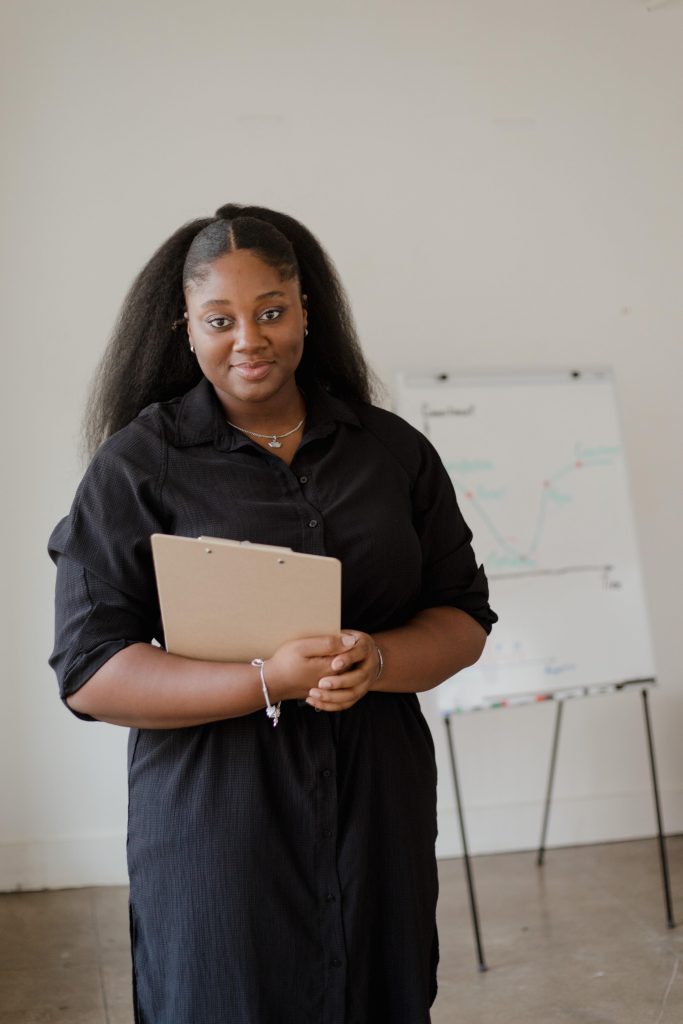Hey Super Designer! Let’s talk about case studies, the gateway to landing those dreamy interview slots! Think of a case study as your virtual portfolio spokesperson, speaking on your behalf with pizzazz! So, you have to make it convincing. Although crafting captivating case studies may seem like a very big deal, but fret not I got you. Here is a link to something specially designed for you Case study template Now that you have seen that I really got you, here’s a step by step guide below on how to use the case study template. Step 1: Open the link above, Click on the project name to copy or duplicate file to your own figma board Step 2: Edit the title section to your project name. Step 3: To add the image of your design, double click on the phone frame, click on fill, then change fill to image. Step 4: Click “Choose image” to add your image. Step 5: Ensure to edit all text layer to suit your content. Step 6 Remember to always double click to edit text. Step 7 To add your images to the phone frame, double click on the frame to see fill, then click on add images. Step 8 After editing all frames with your contents, arrange each frame vertically. Step 9 Highlight all, then press on Shift A or right click to add auto layout, change vertical gap to 0. Step 10 Now you are done, click on export. Your case study is ready to be uploaded on Behance. However, if you haven’t got an idea of what a case study really entails, you won’t get the best out of the editable template to produce a captivating case study that lands you that dream gig you’ve always wanted no matter how hard you try. Let’s run through what a case study is and what is required What exactly is a case study? A case study is a comprehensive review of a project or product that helps people to comprehend the ideas, concepts, and efforts that went into making the product by thoroughly outlining the design journey. It displays not just the outcome but also the reasoning behind each design choice, the difficulties encountered, and the solutions found to resolve them. Think of it as the producer, crew and cast doing a recount of the making of a great and interesting movie, the audience only sees the end product but never the efforts put into making it so taking then through the journey of the movie helps them better understand the idea and efforts put into making such exquisite work. Tips to writing a compelling Case Study The main parts of a well-structured case study include: Title of the Case Study Introduction/Overview UX Design Process User Research Define the Problem Ideation Steps to come up with a solution Test Solution and Iteration Next Steps and Learning Give your project a title Upon opening any case study, the title, serves as a moment of decision on whether to proceed with reading the UX case study or not. A good title for a UX case study should be clear, concise, and descriptive, giving the reader a glimpse of what to expect from the case study content. It should be attractive, engaging and encourage the reader to delve deeper into the study to learn more about the UX challenges and solutions presented. Introduction/Overview The overview section of a UI/UX case study provides a concise yet informative summary of the entire project. It gives readers a quick understanding of what the case study is about and what they can expect to find in the following sections. Keep the overview section concise, ideally fitting within one to two paragraphs. Here’s what the overview should entail: Project Description: Begin by introducing the project or product that you worked on. Mention the name of the client or company, the type of product or service involved, and the context of the UI/UX redesign or creation. Objectives and Goals: Clearly state the primary objectives and goals of the UI/UX design project. What were the specific problems or challenges you aimed to address? What did you hope to achieve through the redesign or creation of the user interface and user experience? Key Deliverables: Mention the key outcomes or deliverables of the project. For example, was it a redesign of an existing app, the creation of a new website, or an improvement of certain features? Target Audience: Briefly describe the target audience or user base for the project. This may include demographics, user behaviors, or specific user needs that were considered during the design process. Duration: Mention the overall timeline or duration of the project, including any major milestones or phases. Role and Team: If you are part of a design team, mention your role or the roles of other team members involved in the project. This could include UI/UX designers, researchers, developers, project managers, etc. Explain your Design Process Here is where you can really put your UX skills to the test. Describe the UX Design Process you used for the readers. In other words, describe the various project actions you took and explain why you chose to take them. You can also include a timeline for the project. User Research Good user research leads to a good user experience as it aids in identifying user behaviors, wants, and motivations. Successful UX research actually eliminates assumptions and guesswork. Simply put, effective user experience research is profitable. The major objective of this section is to define Who your users are? What do they really need? What is their real problem? What is your observation? This is where you include your research questions, insights from the research, and your competitive analysis. Define the exact problem When your research is over, you will have a wealth of insights, both quantitative and qualitative. The information acquired must be analyzed and connections made around it in the following stage in order to yield some findings. The only way to […]
Category Archives: Design
As a designer I struggled with accepting the importance of learning soft skills being that I was of the popular opinion where I believed I was a remote worker and so far I give good designs then all is well. It was until my first interview before I knew I was kidding myself. It is important to know that design goes beyond the pixels on a screen or the use of software like Figma. It’s about understanding people, solving problems, and creating meaningful experiences, and while you may be honing your technical skills and unleashing your creative potential in you, there’s an often overlooked aspect that can set you apart in the competitive design landscape – soft skills. Here are 4 soft skills to learn that would help build a relationship with not only your boss, colleagues or friends but would also improve and build a good relationship with your users: 1. Communication: Communication is at the forefront of these skills. As a designer, you must effectively convey your ideas, thoughts, and visions to clients, colleagues, and even stakeholders. Clear communication fosters strong relationships, ensures everyone is on the same page, and paves the way for successful collaborations. Being able to explain your design decisions and receiving constructive feedback will help you grow as a designer. One way to grow and improve this is by joining and interacting in a community like HerTechTrail. 2. Empathy Empathy is another invaluable soft skill. By putting yourself in the shoes of your target audience, you can truly understand their needs, aspirations, and pain points. Empathy enables you to create designs that resonate deeply, forging emotional connections and leaving a lasting impact. Embracing empathy will make your designs and thoughts user-centred, intuitive, and inclusive. 3. Collaboration Collaboration is the backbone of any design. As you embark on projects, you’ll find yourself working with diverse teams, each member bringing their expertise and perspectives. Collaborative skills allow you to navigate different ideas, find common ground, and create positive solutions. It is crucial to embrace teamwork, active listening, and embracing different viewpoints. 4. Problem-solving Problem-solving is the stronghold of a great designer. Soft skills such as critical thinking, adaptability, and resilience equip you to navigate the inevitable challenges and roadblocks along the way. By approaching design problems with a growth mindset and a willingness to explore alternative solutions, you’ll find yourself overcoming obstacles and pushing the boundaries of your creativity. Finally, in the fast-paced and ever-evolving design industry, possessing a soft skill is what sets extraordinary designers apart from the crowd. Learning and understanding design theories and law make the foundation, but the integration of soft skills truly showcases your potential as a designer. So, as you embark on your design journey, remember to nurture your soft skills alongside your technical abilities. Seek opportunities to enhance your communication, empathy, collaboration, and problem-solving skills. Embrace the power of effective communication, understand the people you design for, collaborate with diverse teams, and approach problems as exciting challenges to conquer. Ayomide Adekoya Design community Lead


